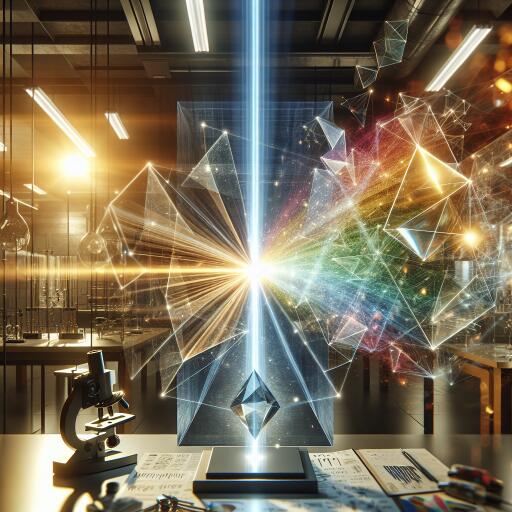Logic with Light – Innovations Report
Introducing diffraction casting, an innovation in optical-based parallel computing.
In the quest for power-efficient and high-speed computing, the limitations of electronic technology are becoming more apparent. As applications grow increasingly complex, from artificial intelligence to advanced simulations, they demand more from our devices, pushing them to the brink of their electronic-based capabilities. The heat generated and the physical constraints of fabrication are leading researchers to explore alternative solutions. Optical computing, leveraging the properties of light, emerges as a promising candidate.
Optical computing centers on the use of light waves which interact in multifaceted ways with optical materials, doing so without generating heat. The prospect of processing multiple light waves through materials simultaneously without interference opens the door to creating a massively parallel and power-efficient computing system.
Introducing Diffraction Casting
One novel approach addressing the challenges of optical computing is diffraction casting, an advancement pioneered by Associate Professor Ryoichi Horisaki and his team at the Information Photonics Lab, University of Tokyo. Unlike previous techniques such as shadow casting—utilized in Japan in the 1980s, which relied on bulky geometric optical structures—diffraction casting capitalizes on the wave properties of light to achieve more efficient and flexible optical elements.
“Diffraction casting offers a spatially efficient, functionally versatile framework for optical computing,” explains Horisaki. “Our numerical simulations, using compact 16-by-16 pixel black-and-white images as data inputs, have shown promising outcomes. These simulations demonstrate that optical elements can perform logical operations efficiently, setting the stage for future integration in universal computing systems.”
The proposed design is entirely optical, with the conversion to digital signals saved for the final output stage. Data, visualized as an image, is processed through layers of other images symbolizing stages of logic operations—a process akin to layering in image editing software. As light passes through these layers, it forms an image onto a sensor, subsequently translating into digital data.
Diffraction casting functions as a component within a hypothetical computer system based on this principle. It serves as an adjunct rather than a full replacement for current systems, similar to how GPUs provide specialized processing capabilities for graphics and machine learning tasks.
Potential and Future Prospects
“The practical implementation of diffraction casting could take about a decade,” says lead author Ryosuke Mashiko. “Although rooted in proven concepts, there remains significant work to physicalize this theory entirely. Presently, diffraction casting performs the 16 fundamental logic operations crucial to information processing, but this system could evolve into areas such as quantum computing.”
This research was conducted under the Grant-in-Aid for Transformative Research Areas (A), within the project “Photonic Computing Highlighting Ultimate Nature of Light,” led by Professor Tetsuya Kawanishi at Waseda University, Japan. The progress in diffraction casting signifies a crucial step toward realizing optical computing’s promise as a transformative technology in computing landscapes.
Journal Article: Ryosuke Mashiko, Makoto Naruse, Ryoichi Horisaki. “Diffraction casting,” Advanced Photonics, DOI: 10.1117/1.AP.6.5.056005
For further details, explore the Graduate School of Information Science and Technology and the Information Photonics Lab.
Research Contact:
Associate Professor Ryoichi Horisaki
Graduate School of Information Science and Technology,
The University of Tokyo,
7-3-1 Hongo, Bunkyo-ku, Tokyo, 113-8656, Japan
Email: horisaki@g.ecc.u-tokyo.ac.jp
The University of Tokyo leads in Japan and ranks among the world’s foremost research universities. Discover their extensive research contributions at www.u-tokyo.ac.jp/en/ or follow their news updates on X (formerly Twitter) at @UTokyo_News_en.
The exploration of light for logic operations heralds an era of innovative computing solutions. As diffraction casting evolves, it could become the blueprint for the next frontier in computing technology, potentially reshaping our interaction with devices and the broader digital landscape.









